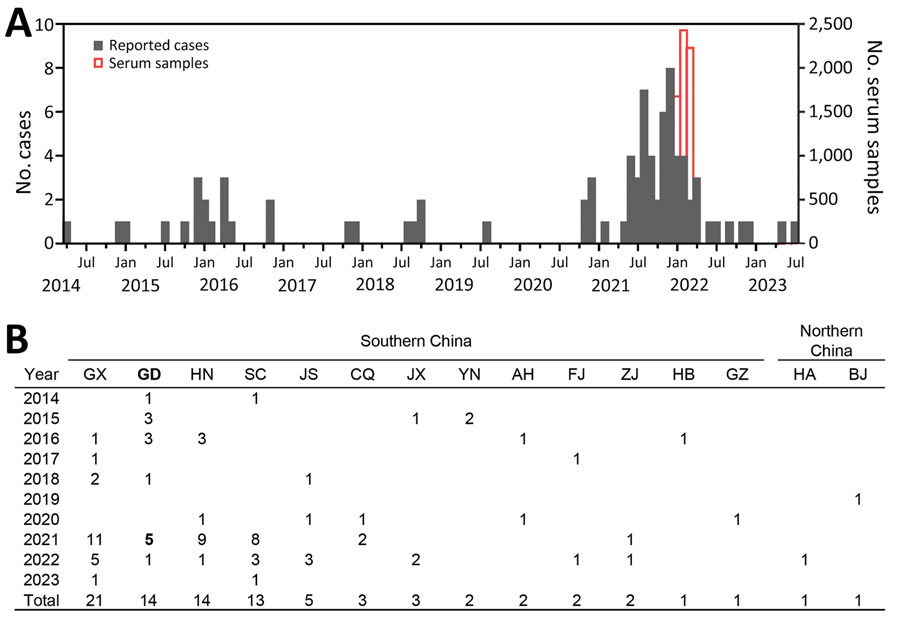Volume 30, Number 4—April 2024
Research Letter
Seroprevalence of Avian Influenza A(H5N6) Virus Infection, Guangdong Province, China, 2022
Figure

Figure. Collection timepoints and locations of 6,363 persons from whom residual serum samples were collected in Huizhou and Dongguan cities, Guangdong Province, China, plotted against the temporal and spatial distribution of human infection with influenza A virus subtype H5N6 in China as a whole. A) Temporal distribution of 85 human infections with H5N6 in China during 2014–2023 and collection timepoints of 6,363 residual serum samples. Scales for the y-axes differ substantially to underscore patterns but do not permit direct comparisons. B) Geographic distribution of 85 human H5N6 infections in China by province, municipality, or autonomous region, as of August 1, 2023. The numbers represent the confirmed cases of infection in each area. Guangdong Province (boldface), the site of the seroprevalence study, reported all 5 local H5N6 cases in 2021 within Dongguan (n = 2) and Huizhou (n = 3) cities, where the residual serum samples were collected. AH, Anhui; BJ, Beijing; CQ, Chongqing; FJ, Fujian; GD, Guangdong; GX, Guangxi; GZ, Guizhou; HA, Henan; HB, Hubei; HN, Hunan; JS, Jiangsu; JX, Jiangxi; SC, Sichuan; YN, Yunnan; ZJ, Zhejiang.
1These authors contributed equally to this article.